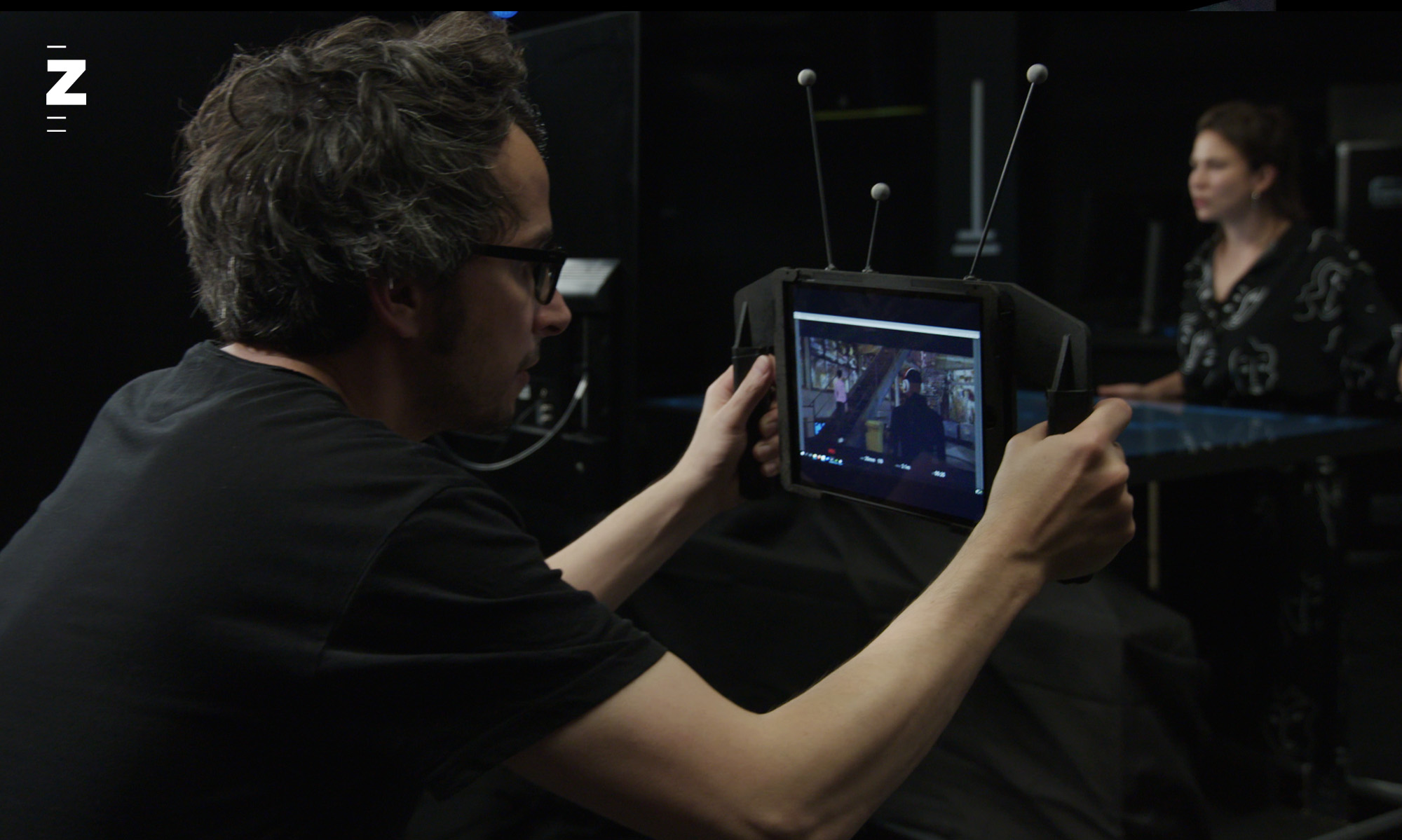Virtual production methods for an animation film and a VR experience by filmmaker in residence Andreas Dahn | © ZHdK2021
Illuminated Flying Objects (2021)
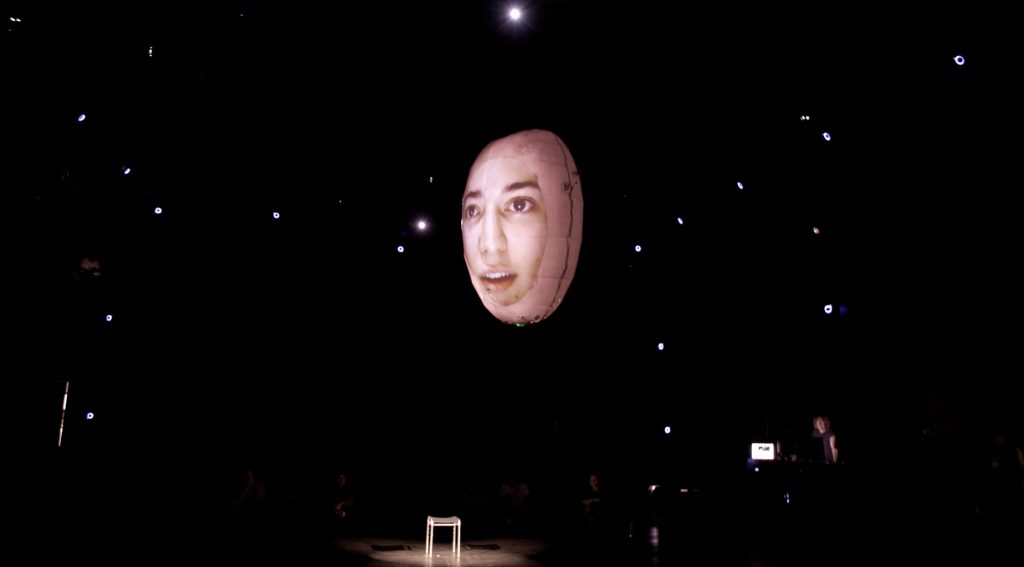
Interdisciplinary workshop with BA students (Z-module), Sept. 2021
The workshop with the German title Tanz der fliegenden Lichtobjekte offered an introduction into the basic technical infrastructure and into current research activities of the Immersive Arts Space. The students designed and implemented prototypes of three-dimensional media installations with helium drones, spatial projections and 3D audio. They constructed their own zeppelin models, developed control modalities and designed video textures for them. After two weeks three immersive experiences were presented with a variety of different artistic and narrative approaches. The workshop is based on the findings and methods of the artistic research project Helium Drones.
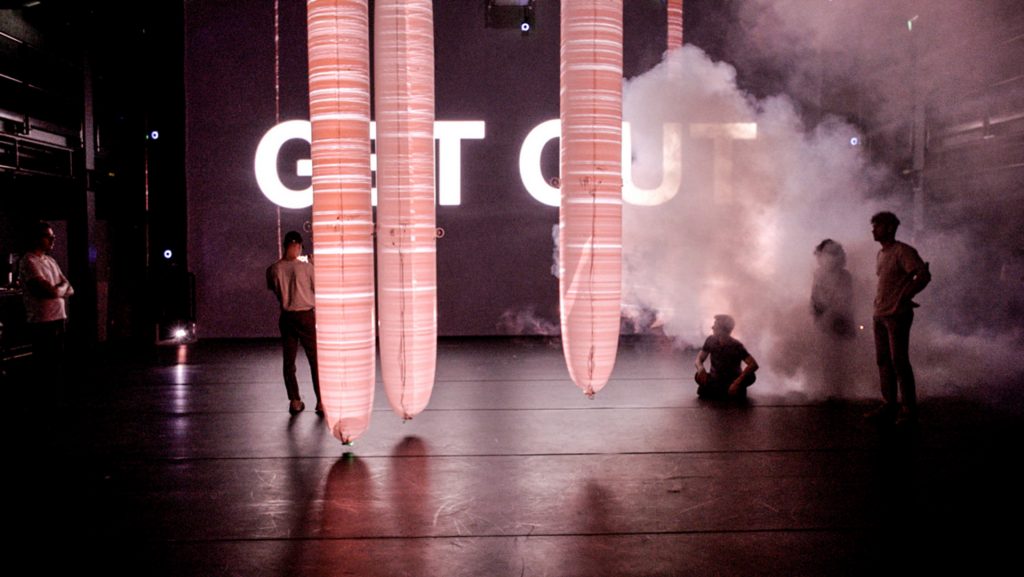
Students:
Micaela Brazerol, Julia Huerlimann, Jana Meyer, Tamina Kronenberg, Yannick Meyer, Laura Nan, Carla Opetnik, Fabio Saccani, Michael Schlapbach, Sophia Strickerschall, Janosch Tillich, Violetta Vigh
Teaching staff:
Martin Fröhlich (head of the workshop, Immersive Arts Space)
Roman Jurt (Design & Technology Lab)
Serena Cangiano (Head of Fablab Supsi, Lugano)
Stella Speziali, (Immersive Arts Space)
Lukas Sander (MA Stage Design)
Johannes Schütt (Institute for Computer Music and Sound Technology)
Illuminated Flying Objects are featured in the Annual Report 2021 by ZHdK. Read full article [here]
Lecture Series (Autumn 2021)
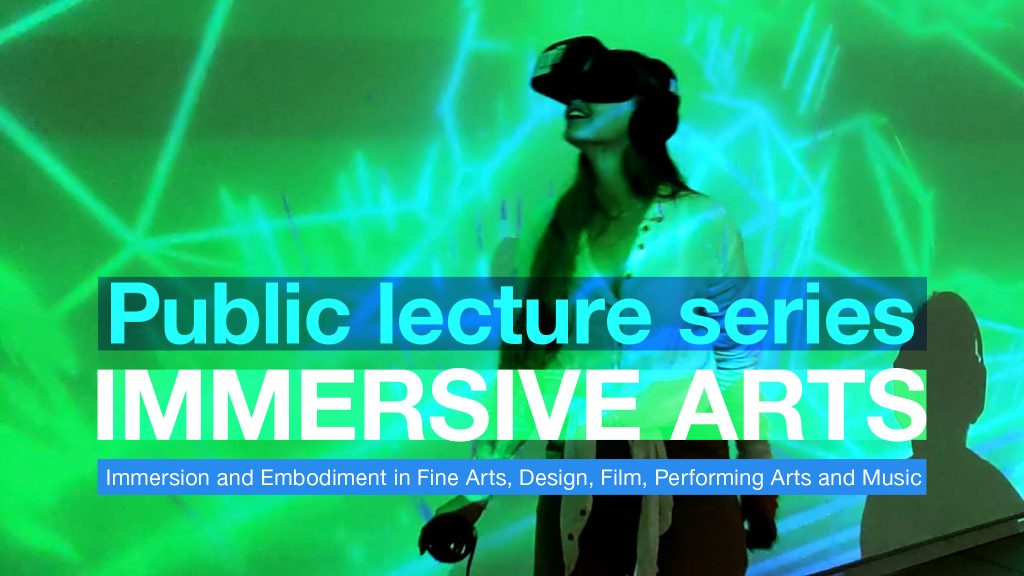
In this series, concepts of immersion as well as embodiment were explored from the different perspectives of fine arts, design, film, performing arts and music, with concrete examples of artistic practices and research projects.
Christian Iseli | Recording from October 12th, 2021
DOUBLE TROUBLE: DIGITAL AVATARS ON STAGE
Anna Lisa Martin-Niedecken | Recording from October 19th, 2021
EXPLORING BODY-CENTERED DESIGN APPROACHES IN MIXED REALITY SPORTS
Olav Lervik | Recording from October 26th, 2021
GAMES IN CONCERT: LESSONS FROM MUSIC IN VIRTUAL REALITY
Marie-France Rafael | Recording from November 23rd, 2021
POST-DIGITAL RELATIONALITY – EMBODIED EXPERIENCES
Melody Chua | Recording from December 7th, 2021
BLACK BOX FADING: (DIS)EMBODIMENT WITH AN IMMERSIVE IMPROVISATION MACHINE
Scene Blocking with cineDesk
Ongoing research project in close cooperation with educational projects in film | © ZHdK2021
> cineDesk has its own website. Please visit www.cinedesk.ch
Immersion and Embodiment
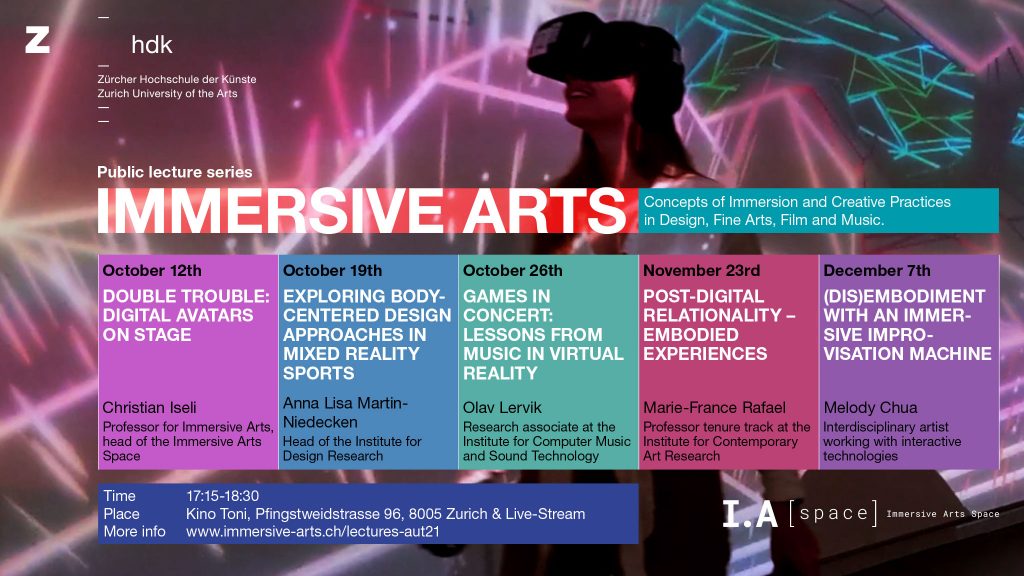
October 12th | Christian Iseli | 17:15- 18:30h
DOUBLE TROUBLE: DIGITAL AVATARS ON STAGE
October 19th | Anna Lisa Martin-Niedecken | 17:15- 18:30h
EXPLORING BODY-CENTERED DESIGN APPROACHES IN MIXED REALITY SPORTS
October 26th | Olav Lervik | 17:15- 18:30h
GAMES IN CONCERT: LESSONS FROM MUSIC IN VIRTUAL REALITY
November 23rd | Marie France Rafael | 17:15-18:30h
POST-DIGITAL RELATIONALITY – EMBODIED EXPERIENCES
December 7th | Melody Chua | 17:15-18:30h
BLACK BOX FADING: (DIS)EMBODIMENT WITH AN IMMERSIVE IMPROVISATION MACHINE
Christian Iseli, Immersive Arts Space
Digital characters have been around for decades. In mainstream cinema, photorealism proved to be a cost-intensive challenge and a long road through the Uncanny Valley. In the game universe, the need for real-time rendering required simplification and abstraction. Meanwhile however, with the help of ever-faster computers, game characters have come closer to their movie siblings and with the real-time capacity of game engines, digital avatars have now entered the live environment of the stage.
In this lecture, the development of digital characters in the media context will be outlined, in order to then address the specific problems that arise when doubles and twins enter the universe of theater and performances. Here, the audience needs to be able to see both the actor (in a motion capture suit) and his or her avatar so as to confirm that the avatar’s performance is indeed being created live, and not the result of a pre-recording. However, the double appearance also has its downside. The spectators need to constantly decide whom to look at: The actor or his or her digital avatar. The research project Presence and Absence of the Immersive Arts Space addressed this specific problem and focused on alternatives to the twin appearance. The outcome of the artistic explorations are discussed in detail.
Christian Iseli has been teaching and researching at the Zurich University of the Arts ZHdK since 1995. He holds a professorship for Immersive Arts, heads the Immersive Arts Space and teaches in the MA Film program. After studying history, German and English literature at the University of Bern, Iseli was a director of documentary films and worked in editing and cinematography on feature films and documentaries.
Anna Lisa Martin-Niedecken, Institute for Design Research
Powerful technologies such as Augmented Reality (AR) or Virtual Reality (VR) take sports, fitness and rehabilitation to a next level. Traditional movement concepts are expanded through interactive technologies and blended with immersive and playful experiences: Gamified fitness training, physical esports, and immersive rehabilitation are pointing us towards the future of physical activity.
In this context, the multisensory and -modal involvement of the user’s body becomes a crucial component and quality feature of these body-centered experiences. However, there is still a lot of untapped potential in the area of attractive and effective mixed reality training applications.
In this lecture, approaches, results and learnings from various interdisciplinary R&D projects in the fields of fitness, rehabilitation and (e)sports will be presented and possible directions for future sports design will be outlined. In particular, topics such as technology-based balance of fun and exertion, empowerment, and social immersion will be highlighted and discussed as potential enhancers of immersion and embodiment in mixed reality sports.
Anna Lisa Martin-Niedecken is head of the Institute for Design Research as well as Senior Researcher at the Subject Area Game Design, Department of Design at Zurich University of the Arts. With her background in sports science (PhD, Institute of Sports Science, Technical University of Darmstadt) and her expertise in game research, Anna’s research and teaching activities mainly focus on the design and evaluation of Serious & Applied Games for health, (e)sports, fitness and rehabilitation, as well as health design.
Besides her job in academia, Anna is Co-Founder and CEO of the ZHdK spinoff Sphery Ltd, a fitness gaming startup, which received multiple prestigious awards for their research-based core product, the ExerCube, as well as for the establishment of the world’s first physical inclusive eSports league, the ExerCube League.
Olav Lervik, Institute for Computer Music and Sound Technology
Games in Concert was a research project funded by the Swiss National Science Foundation at the ZHdK from 2016-2018. The goal was to explore the possibilities of musical environments for musicians in VR and to look for the artistic potentials that lie in the implementation of mechanics more known to the world of game design.
An visual VR environment was programmed with virtual instruments specifically designed to use the advantages of VR. Unto three musicians were able to interact musically with each other in VR while a forth character was used to lead the public through the performance while it was happening. Finally the project was presented at SigGraph Asia 2018 shortly after its conclusion.
During this lecture, while diving into the in and outs of “Games in Concert” the question arises which mechanics and which concepts hold potential for future musical VR environments and which challenges and lessons unfolded during this project.
Olav Lervik is a classically trained freelance composer and pianist who studied in Weimar, Stuttgart and Zurich. His works cover a wide variety of disciplines including scoring music for games and films and sound design for VR/AR applications but also classical orchestration. Olav is currently a lecturer in composition for film, theatre and media and also in sound design at the Zurich University of Arts.
Marie-France Rafael, Department of Fine Arts
What does it mean to think, to see, to act, to feel and to live through the post-digital? Since the 2010s the boundaries between public and private, online and offline have become increasingly blurred due to digitalization and social media. In contemporary art digitality has assumed a new kind of presence—no longer a mere virtual sphere of sociality, but increasingly as a technological interface that structures our most embodied experiences. Today, contemporary art cannot escape digital image production, circulation, and consumption, so what may it look like to engage it–thematize it even–in the work of art itself? A younger generation of artists is specifically focused on the mass circulation, connectivity, and constructedness of images. The production of artistic content, its circulation, and its reception are thus increasingly intertwined processes that are no longer distributed among different instances: Artistic practice has undergone a drastic transformation: it is shaped by the notion of the presence of the digital even beyond digital media and explores new forms of (post-)digital relationality as well as embodied experiences between on- and offline.
Marie-France Rafael is a Tenure Track professor in the Master program of the Department of Fine Arts at the Zurich University of the Arts (ZHdK) since 2019. She holds a PhD in Art History. She studied Art History and Film Studies in Berlin and Paris. From 2011 to 2015 she was a research associate at the Free University of Berlin and until 2019 at the Muthesius University Kiel, Department of Spatial Strategies/Curatorial Spaces. Her monograph «Reisen ins Imaginativ. Künstlerische Displays und Situationen» (Cologne: Walther König, 2017), examines artistic strategies of presentation in contemporary art. Other publications include «Brice Dellsperger. On Gender Performance» (Berlin: Floating Opera Press, 2020), «Ari Benjamin Meyers. Music on Display» (Cologne: Walther König, 2016), and «Pierre Huyghe. On Site» (Cologne: Walther König, 2013).
Melody Chua, Master of Arts in Transdisciplinary Studies
The improvisation machine is an elusive figure. It has no universally agreed-upon form but is instead in a state of continuous fluidity of audiovisual representations. Throughout the performance, it shifts between being treated as a distinct musical agent to being regarded as an embodied posthuman extension to its human counterpart. It is always in tension between the attempt to recognize it as a distinctly encapsulated entity and at the same time as a synergy of independent entities, the fluctuations between which are shaped through immersive representations of itself and the performance environment.
The development of and performance with an improvisation machine can, with careful reflection, serve as a practical method upon which to be relinquished from our traditional understandings of embodiment. The form of the improvisation machine—fragmented through spatially separated electronic devices and mediums—is inherently discombobulated. Indeed, the fragmentation of the improvisation machine reflects a mindbody conceptualization offered by media artist and researcher Lisa Blackman: “We are never a singular body, but are multiple bodies that are brought into being and held together through complex practices of self-production.”
In this lecture, I reflect upon the facets of immersion and embodiment as they manifest in the field of improvised music performance between human and nonhuman agents, using my work black box fading as a case study. How do immersive representations of and experiences between such agents on both audio and visual levels instigate different considerations of what embodiment can be? How can these reflect our biases concerning control, (dis)orientation, and vulnerability in immersive environments?
Melody Chua is an interdisciplinary artist working with interactive technologies in improvisation settings as both vehicles of narrative expression and as opportunities to destabilize the normatives present in one’s relationship with such technologies. The aesthetics of her work gravitate towards immersive futuristic fictions with undertones of nostalgia and introspection, pulling audiences into intimate worlds. Awarded a Fulbright-Swiss Government Excellence Scholarship for the development of a sensor-augmented flute (Chaosflöte), Melody has performed and guest-lectured internationally at festivals and institutions such as the Swiss Digital Day, Network Music Festival, Atlantic Music Festival Future Music Lab, La Côte Flute Festival, Performing Media Festival, Montreal Contemporary Music Lab, New Interfaces for Music Expression (NIME) Conference, University of Music and Performing Arts Stuttgart, University of South Florida, and Embry-Riddle Aeronautical University, among others.
Dreaming of Time and Space
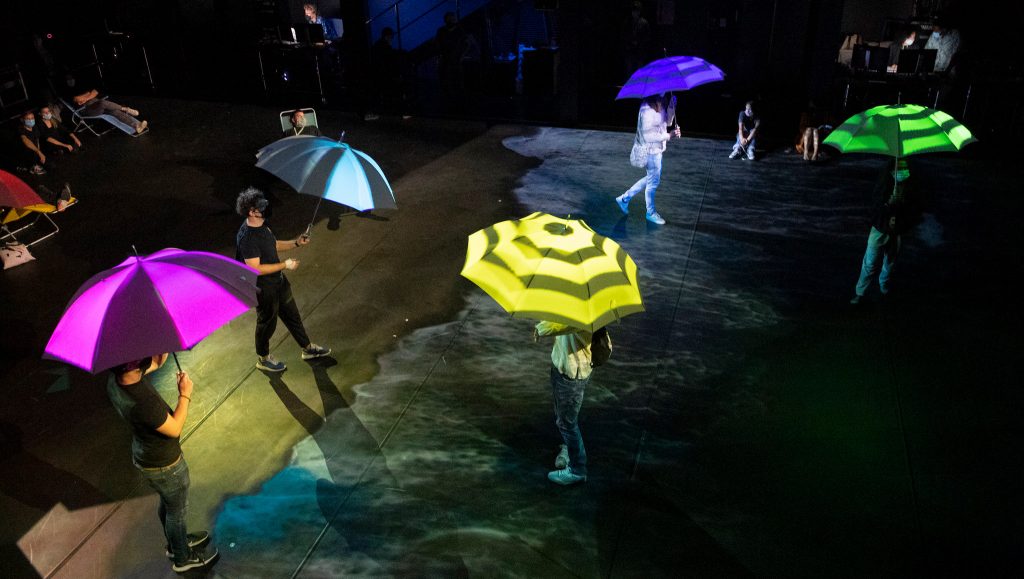
The installation and immersive performance took place between October 6th and 9th 2021
See trailer of the performance here
In the ongoing research project “The Umbrella Project” the use of 3D audio and projection mapping are explored in order to achieve a sense of immersion without isolating participants from the real world, essentially, enabling an imaginary fantasy world to come to life in our own. We employ multiple levels of 3D audio and projection mapping (both directly within and on the umbrella, as well as throughout the room itself) in order to transport the participant into this virtual world.
As such, we can consider the umbrellas, and the overall system of which they are a part, to be an instrument of sorts, in that they literally allow us to compose and explore reactive sonic environments in 6 degrees of freedom (6 DoF). Additionally, the umbrellas can also function as a measurement instrument, much as a stethoscope does as a sonic instrument for medical examination; however, in this case, through the immersive experiences they purvey, the umbrellas enable us to examine the nature of our own perception of reality.
The end goal of the project is to create a series of navigable compositions in the form of exploratory sonic worlds, as well as interactive experiences where the participants’ behaviors (relative to each other and the world) shape the sonic and visual environment. Furthermore, we are investigating sonic and visual paradigms where the umbrellas can function both as objects existing in and can interact with the virtual world, as well as being windows onto these other worlds.
Crew: Eric Larrieux (direction, 3D audio) , Stella Speziali (projection mapping), Mariana Vieira Grünig (scenography)
Virtually Real
Research project in co-operation with the University of Bern, funded by the Swiss National Science Foundation, Paper presentation at IFM 2021 | © ZHdK2021
Presentation at the IFM conference
ZFICTION.21 – Virtual Production
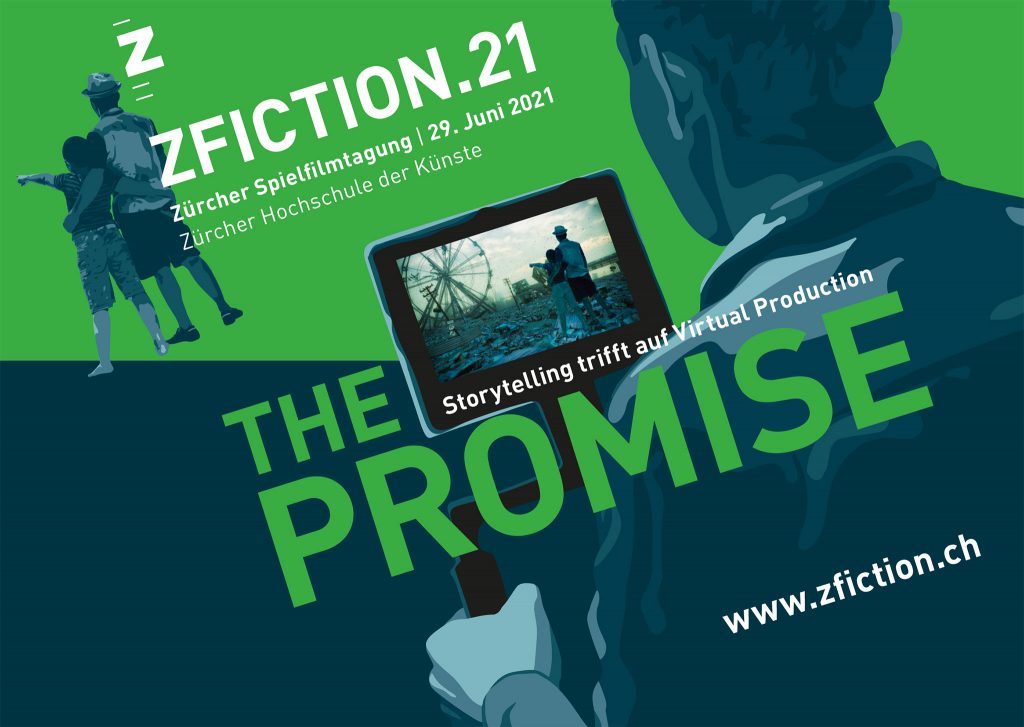
The first edition of the feature film conference ZFICTION took place in June 2021 and focused the versatile promises of the new tools for film production. Filmmakers and researchers explored the question of how virtual production will change the near future of fictional storytelling in film and what new challenges this will bring.
In the conference exhibition Immersive Arts Space hosted a virtual production shooting situation, offered hands-on experiences with the cineDesk and showcased the virtual production method that filmmaker in residence Andreas Dahn had applied for his animation film and VR experience Home in the Distance.
On the conference website www.zfiction.ch the talks, discussions and elements of the exhibtion can be revisited.
Lecture Series (Spring 2021)
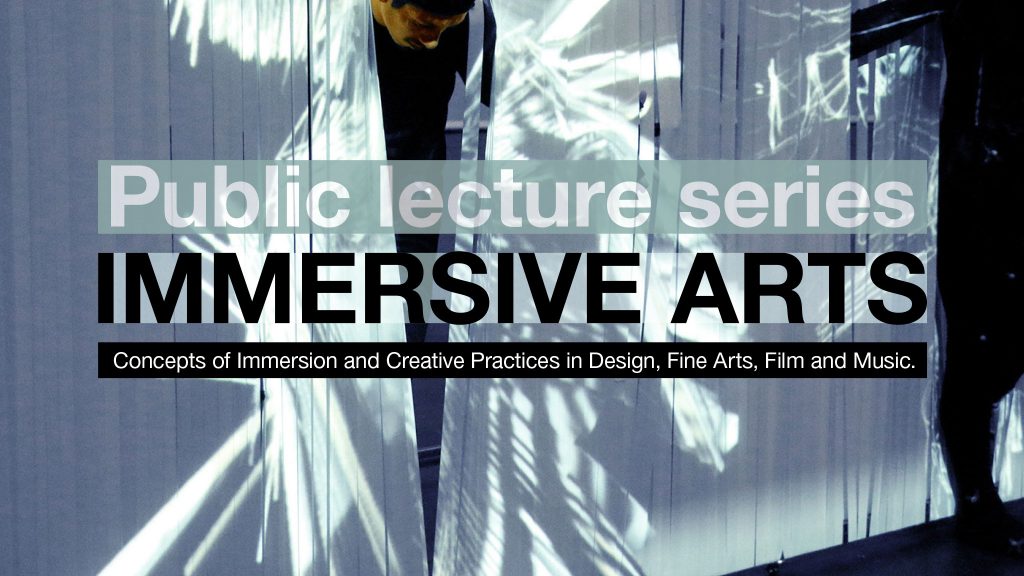
Marcus Maeder | March 16th, 2021
AMBIENT: FROM IMMERSION TO IMMANENCE
Felix Stalder | April 13th, 2021
IMMERSION AS ESCAPISM, CONTROL, OR CO-EXISTENCE
Maike Thies | April 27th, 2021
ENTANGLED IN ARTIFICIAL WORLDS
Hannah Walter | May 4th, 2021
BECOMING WITH TECHNOLOGY. BECOMING CYBORG
Christian Iseli | May 11th, 2021
EXPANDED ILLUSIONS: CINEMATIC CONCEPTS OF IMMERSION
